If your 12V battery isn’t charging from solar, don’t panic. Most issues come down to a handful of common problems that you can diagnose and fix with a bit of know-how. Below, we break down the top reasons your panels may not be charging your battery, and show you how to identify what’s going wrong, why it happens, and how to get your system back on track.
Quick Check First✅
Make sure you’ve ticked off these essentials before switching your dual battery system to lithium:
- Isolate the system - Turn off/disconnect all non-essential loads (fridge, lights, pumps) so you’re measuring the actual charging, not a tug-of-war between the charge and the load.
- Note your controller’s status - Check the LEDs on your solar regulator or the status within your charging system’s app. Look for any faults: over-voltage, over-temp, low-temp charge lockout, battery not detected, etc.
- Check any fuses/breakers - There’s typically a fuse/breaker from the panel to the regulator, and from the regulator to the battery. Reset or replace any fuse or breaker if the circuit is broken.
- Measure the resting battery voltage - Lead-acid: ~12.6–12.8V = full, ~12.2V ≈ 50%, ≤12.0V = very low. LiFePO₄: ~13.3–13.5V = full, ~13.0V ≈ mid, ≤12.5V = low. If the battery is very low (<~10–11V), many controllers won’t “see” it — if this is your issue, jump to Issues 6 and 9.
-
Clean & angle the panels - Wipe away any dust, debris, and dew. Tilt your panels toward the sun if possible and recheck the controller for input/charge current.
If your battery is still not charging after this quick check, don’t stress - we’ll discuss common issues, diagnostics, and troubleshooting.
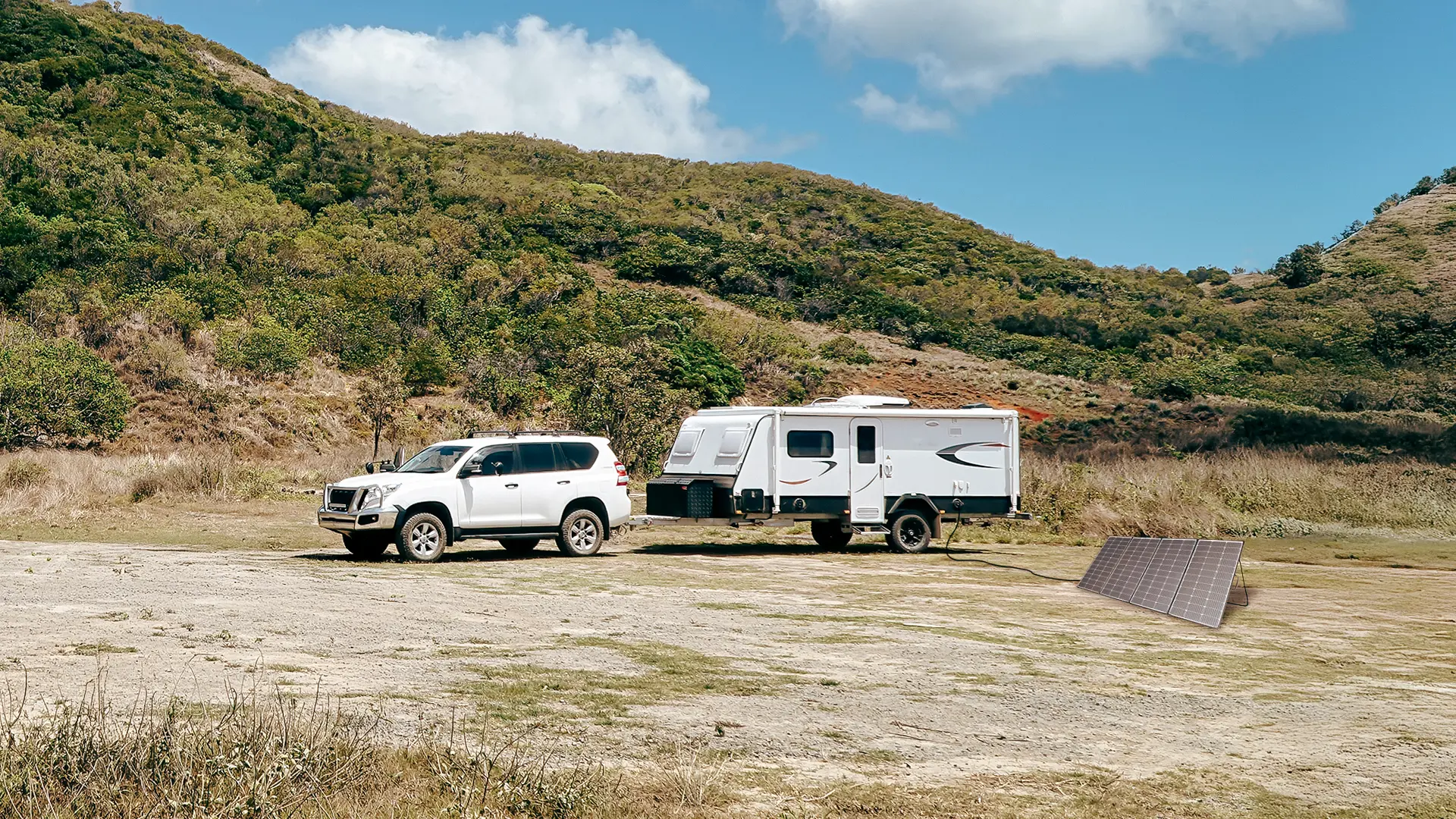
Issue #1
The panels aren’t getting enough sun
If your controller shows PV voltage moving but little or no current, it’s a sign your panels aren’t harvesting enough sunlight. You might also notice strong charging in the morning and afternoon, but poor results at midday when the panels are hottest.
Check the PV voltage (Vpv) on your regulator. Typically, for a 12V panel, the open-circuit voltage (Voc) should be between 20-23V, and the operating voltage (Vmp) should be between 17-19V. If your PV voltage is barely above the battery voltage, it’s likely you have a shading, angle or heat problem. For example, if you have a 12.8V battery and your PV voltage is 13.0V. In this instance, the system doesn’t have enough ‘headroom’ to push current into the battery.
Headroom refers to the difference between the input and output voltage. For a regulator to work properly, there needs to be a significant enough difference between input and output voltage, or a ‘large headroom’.
We recommend you aim to have your PV voltage sit at least 5V above the battery voltage for the system to work properly.
It’s important to check for any shadows across the panel's surface. Even a small shadow from an overhead tree or your roof rack can have an effect on the output from the panels. Heat also plays a significant role in the output of the panels, and when the panels become too hot, they naturally lose voltage. So it’s good to also feel the temperature of the panels to make sure they aren’t overheating.
How to fix it:
Move or tilt your panels to face the sun more directly. If you have portable panels, it’s even worth ‘chasing the sun’ or moving the panels to face the sun every couple of hours, to maximise their solar generation. It’s also important to wipe off dust, dirt, or bird droppings regularly and ensure there’s no shade blocking the solar panels.
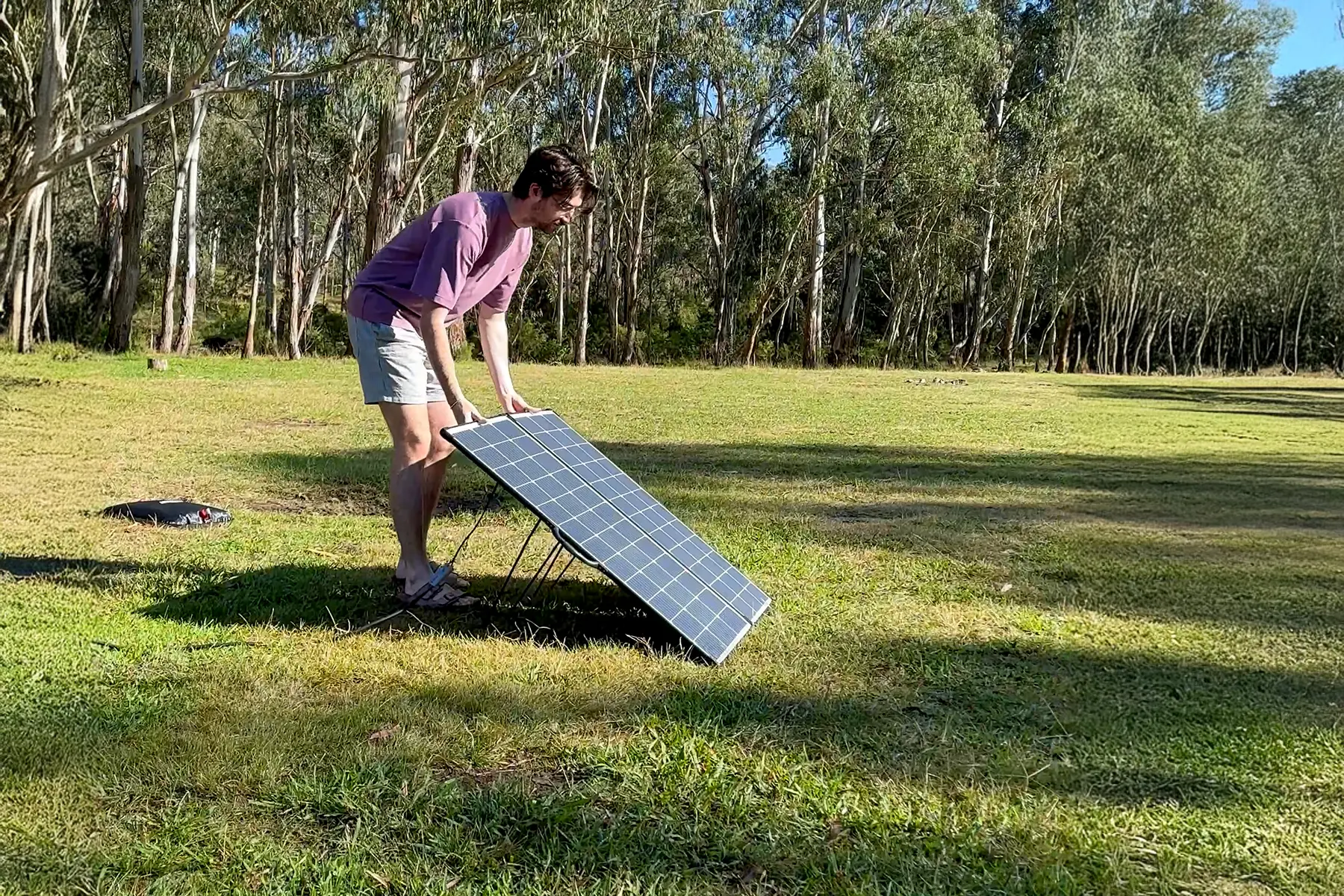
If heat is the main issue and you’re running a PWM regulator, upgrading to MPPT or wiring panels in series (within voltage limits) will give your system more efficiency and help maintain charging.
Issue #2
Wiring mistakes or reversed polarity
If your controller shows zero PV input or a “PV fault,” and you’ve recently rewired or added panels, wiring may be the culprit. It’s easy to miswire panels, especially when combining series and parallel connections.
Disconnect the PV leads from the controller (while leaving the battery connected) and measure the voltage with a multimeter. For a 12V panel, you should see between 20–22V. If you see near-zero voltage or negative readings, the polarity is reversed or a connection has failed.

Reversed polarity can prevent the regulator from recognising the array, while loose, bent, or corroded connectors can interrupt the circuit. If different panel types are joined incorrectly, you may also see mismatched voltages or currents that stop charging altogether.
How to fix it:
You’ll need to check and correct the polarity within the system. Ensure that if you’re wiring in parallel, positive connects to positive, and negative connects to negative. If you’re wiring in series, ensure that the positive connects to the negative. It’s also important to use proper MC4 connectors rather than makeshift joins, and make sure connectors are fully seated and locked.
Issue #3
A blown fuse, tripped breaker, or dodgy connector
If your system shows correct voltages but no current flow, you may have a hidden blown fuse, tripped breaker, or bad connection. Check that all breakers are reset and fuses are intact. Wiggle or tug connectors to spot corrosion, loose crimps, or overheated plastic. Over-current events, wear-and-tear, or poor installation can cause fuses to blow or breakers to trip.
Connectors that aren’t properly sealed can corrode, while poorly crimped lugs may loosen over time. Even a little resistance at a bad join can kill charge flow, especially in low-voltage 12V systems where every volt matters.
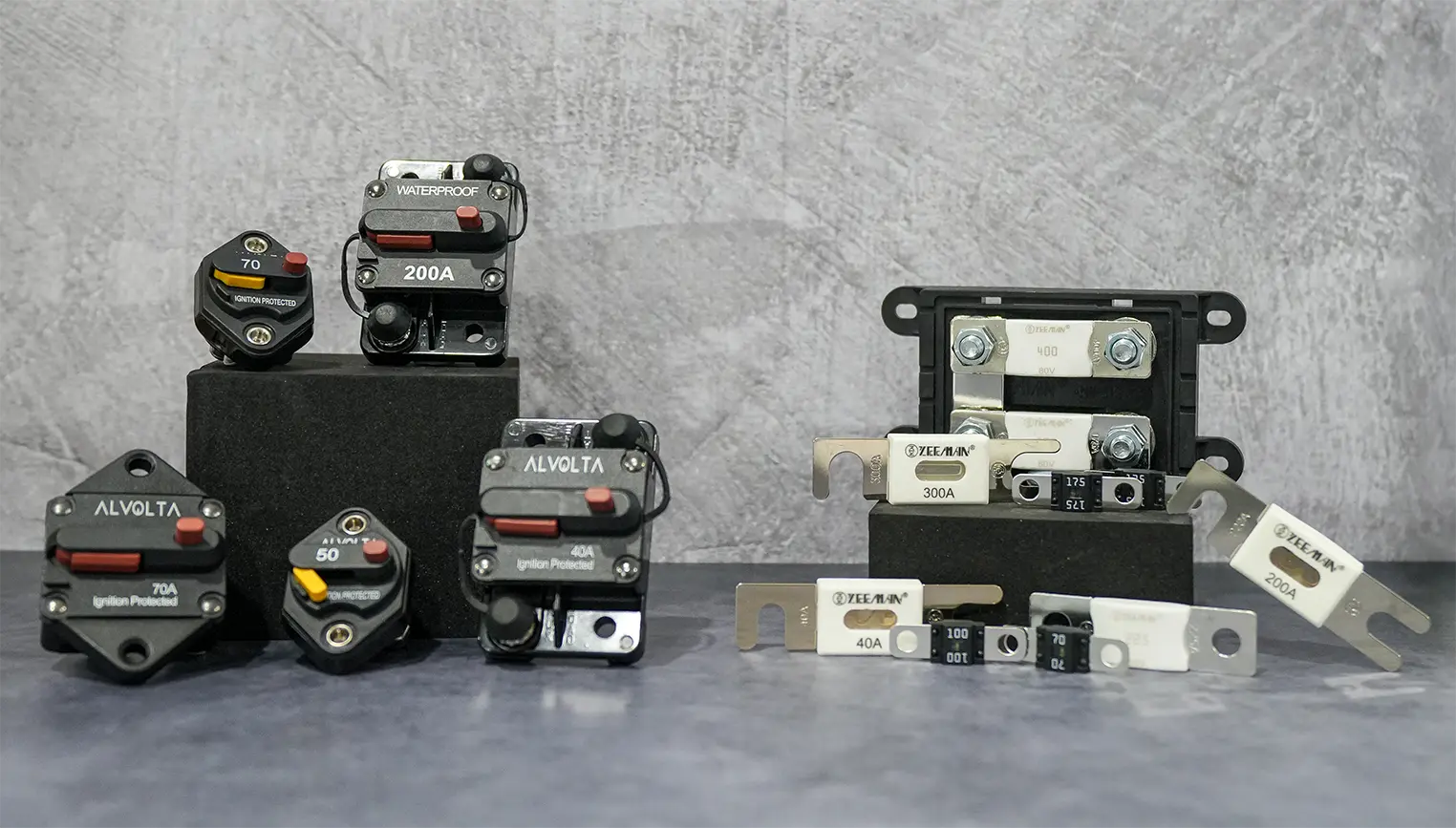
How to fix it:
Replace any blown fuses with the correct type and rating. Reset or swap out any faulty breakers. Re-terminate any corroded or loose connections using quality tinned copper lugs and adhesive heat-shrink. We recommend minimising the number of connections where possible and ensuring that all connections are protected from water, dust, and vibration.
Read More: DC Circuit Protection Guide
Issue #4
Double regulation in the system
If you’re using a portable panel with its own regulator and plugging it into a system that already has an MPPT or DC-DC charger, you might be seeing poor or no charging. To confirm this, measure the voltage at the controller’s PV input. If this reads too close to the battery’s voltage rather than a higher panel voltage, then the system may be double-regulated.

Solar regulators need raw panel voltage to work properly, so if a panel has a built-in regulator that is already dropping the voltage down to the battery’s level, the external MPPT or DC-DC charger can’t operate as designed. This will create a conflict within the system, which prevents the battery from being charged.
How to fix it:
The simple fix here is to only have one regulator in your system. If your setup already includes an MPPT/DC-DC charger, you’ll need to bypass or remove the portable panel’s regulator so it feeds unregulated solar voltage into your system. If you prefer to keep the panel’s regulator, you can connect it directly to the battery (with fuse protection), instead of connecting into another regulator’s PV input.
Issue #5
Incorrect regulator settings
If your regulator says that it’s charging, but your AGM battery never climbs above 13-13.4V or your lithium battery floats too high or low, then your regulator settings may be wrong. Each battery chemistry has specific charging requirements. If the regulator is set to the wrong type, say, gel instead of LiFePO₄, it won’t reach the correct absorption or float voltages. Check your regulator’s menu or app for the battery type and voltage setpoints it’s currently running within.
Absorption/float setpoints should be:
Absorption | Float | |
AGM | 14.4 - 14.7V | 13.5 - 13.8V |
Gel | 14.1 - 14.4V | 13.5 - 13.8V |
Flooded | 14.6 - 14.8V | 13.2 - 13.5V |
LiFePO₄ | 14.2 - 14.6V | None, or 13.4 - 13.6V |
How to fix it:
Select the correct battery profile (AGM, gel, flooded, LiFePO₄) and confirm absorption and float values match your battery manufacturer’s recommendations. Temperature sensors can also mislead the regulator, causing under- or over-charging. For lead-acid, enable temperature compensation and place the sensor near the battery. For LiFePO₄, disable temperature compensation unless specified by the battery manufacturer.
Issue #6
The battery isn't charged enough, is too hot/cold, or is in BMS protection mode
If your regulator shows a “battery not detected” or “low voltage” alert, the battery may be in a state that doesn’t allow the regulator to charge it. To determine this, you’ll need to measure the voltage directly at the terminals. If it returns a reading below 10–11V, the regulator may be prevented from charging. Lead-acid batteries that are very flat can drop below a controller’s detection threshold.
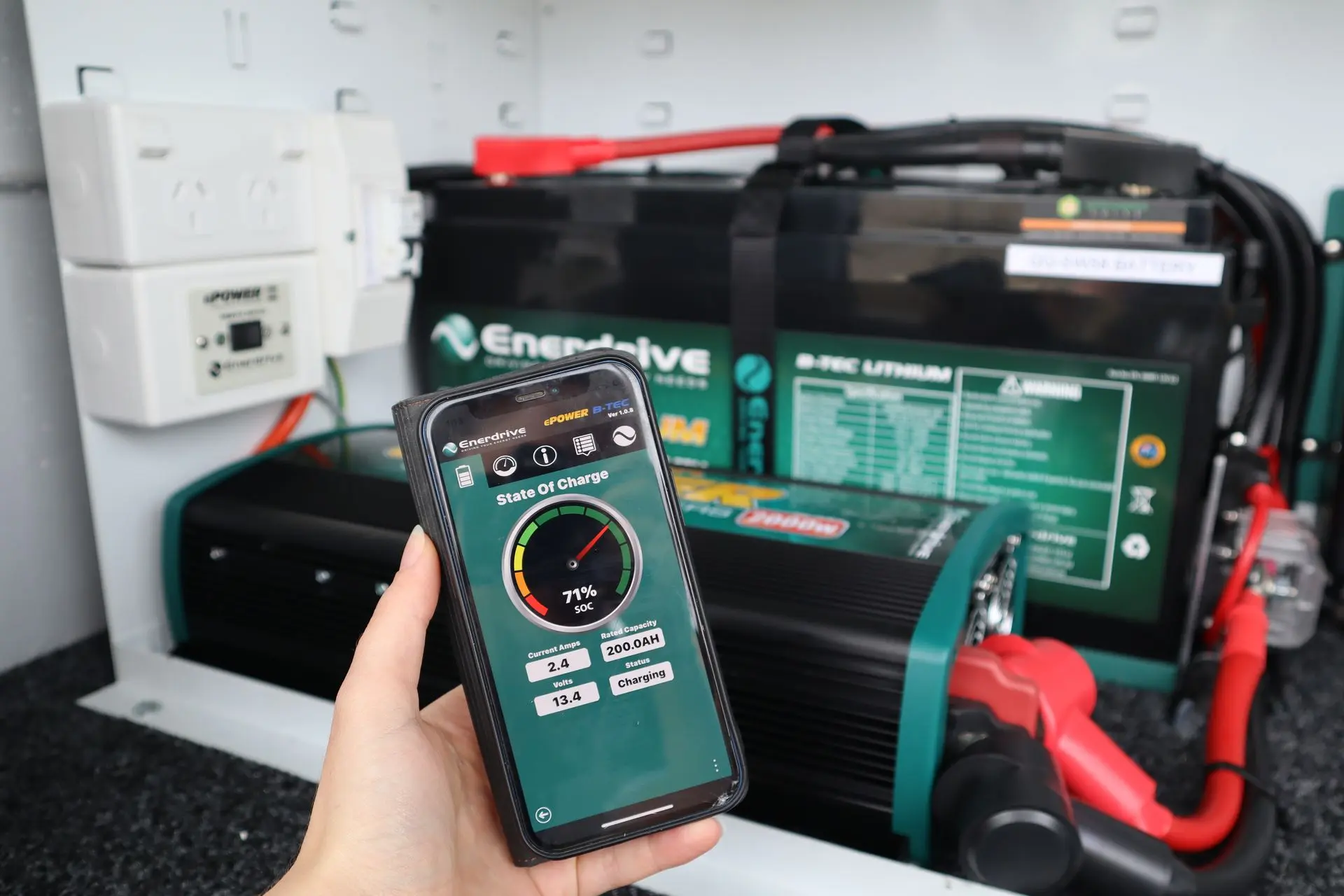
If you have a LiFePO₄ battery, check the BMS app if possible, and look for an error message. In some systems, this error message will state “low-temp”, “high-temp”, or “low-voltage cut-off”; however, some systems won’t state the error, so you will need to make sure the issue isn’t something else. LiFePO₄ batteries have built-in BMS protections that shut off charging below 0°C, above 50°C, or after over-discharge. Until the battery is recovered, the solar regulator cannot deliver a charge to the battery.
How to fix it:
Use a mains charger or DC-DC charger from your alternator to raise the battery above the controller’s minimum. For LiFePO₄, charge gently to “wake” the BMS if it has shut down. Avoid charging below 0°C unless your battery has a built-in heater or approved cold-charge strategy, and ensure good ventilation to prevent overheating.
Issue #7
Over-voltage or undersized regulator
If your controller shows an over-voltage fault, shuts down, or feels hot, it’s possible that your array may be too large. To determine if this is the case, add up the open-circuit voltage (Voc) for the panels in series, and compare this to the controller’s maximum PV input. Check the regulator’s maximum current rating as well, as there might also be too much current for the regulator to handle.
Solar regulators are limited by both voltage and current. Too much voltage input from the solar panels can fry electronics, while too much current forces the controller to throttle or shut down.
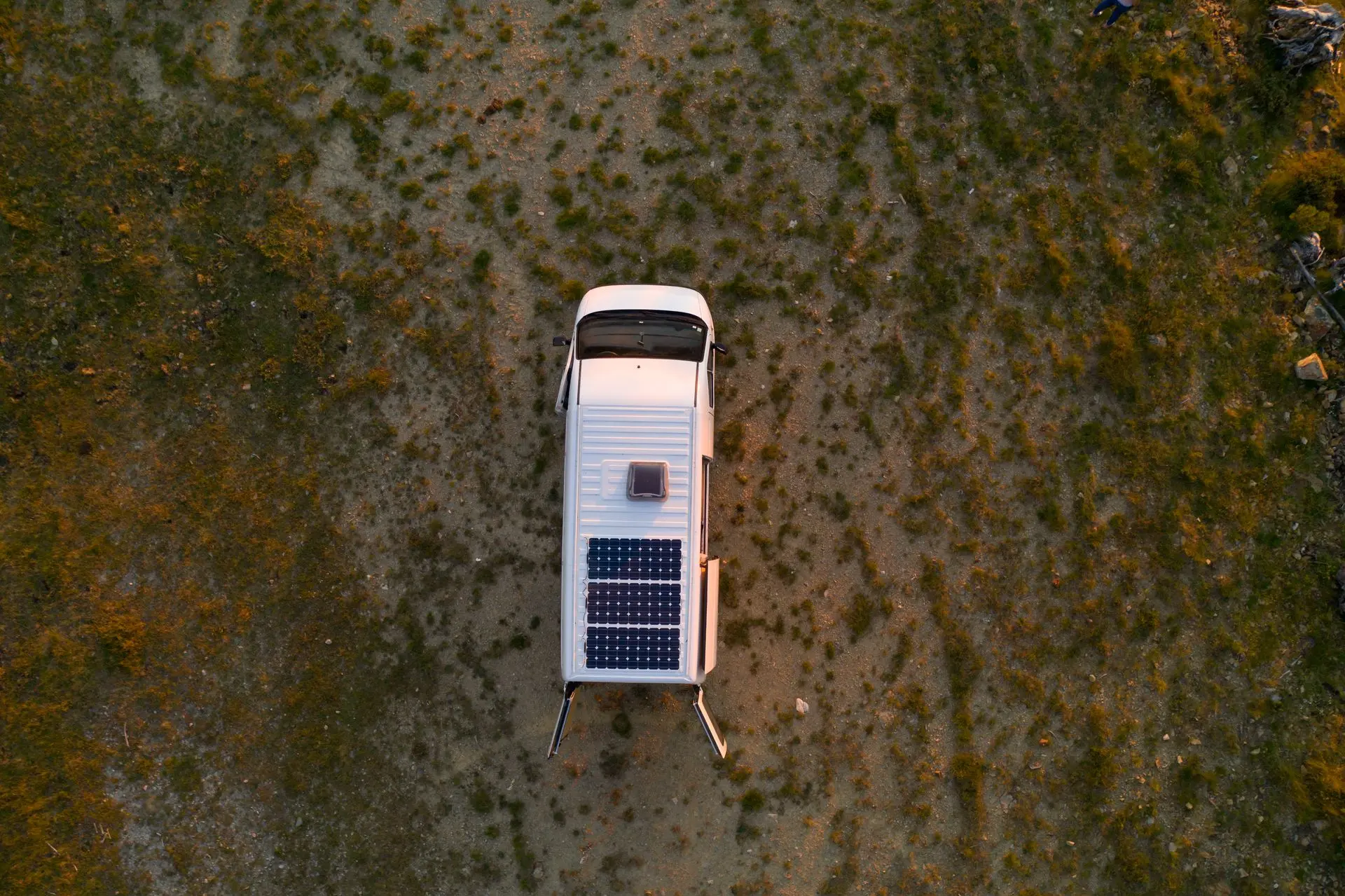
How to fix it:
Your system needs to work within your regulator’s voltage and current limits. If you’ve upgraded your array, you might need a larger regulator to accommodate the larger voltage from the panels.
Read More: How To Calculate How Much Solar You Need For Camping & 4WD
Issue #8
The regulator doesn’t “see” the battery
If you’ve recently changed the battery in your system and can’t get the regulator to start charging it, you might need to disconnect and reconnect your system. Many regulators require the battery to be connected before the solar input. This is because regulators use the battery to establish a voltage reference, so if you connect the panels first, the regulator may not even recognise the battery at all.

How to fix it:
Disconnect the PV input, then connect the battery and wait for the regulator to initialise, and reconnect the PV input last. If the battery is too flat to be detected, you’ll need to boost it first with a mains connection or DC-DC charger.
Issue #9
Voltage drop in long/skinny cables
If you measure a healthy voltage at the panel but a much lower voltage at the controller, you’ve got voltage drop. Thin or excessively long cables create resistance, which saps the voltage. In 12V systems, even small drops can have a decent effect on charging efficiency. You’ll need to determine how much the voltage is dropping in your system. Measure the voltage at the panel and again at the regulator’s PV input, while the panel is under the sun. If you’re losing more than 3% of your voltage in a 12V system, then the charging efficiency is being significantly affected.
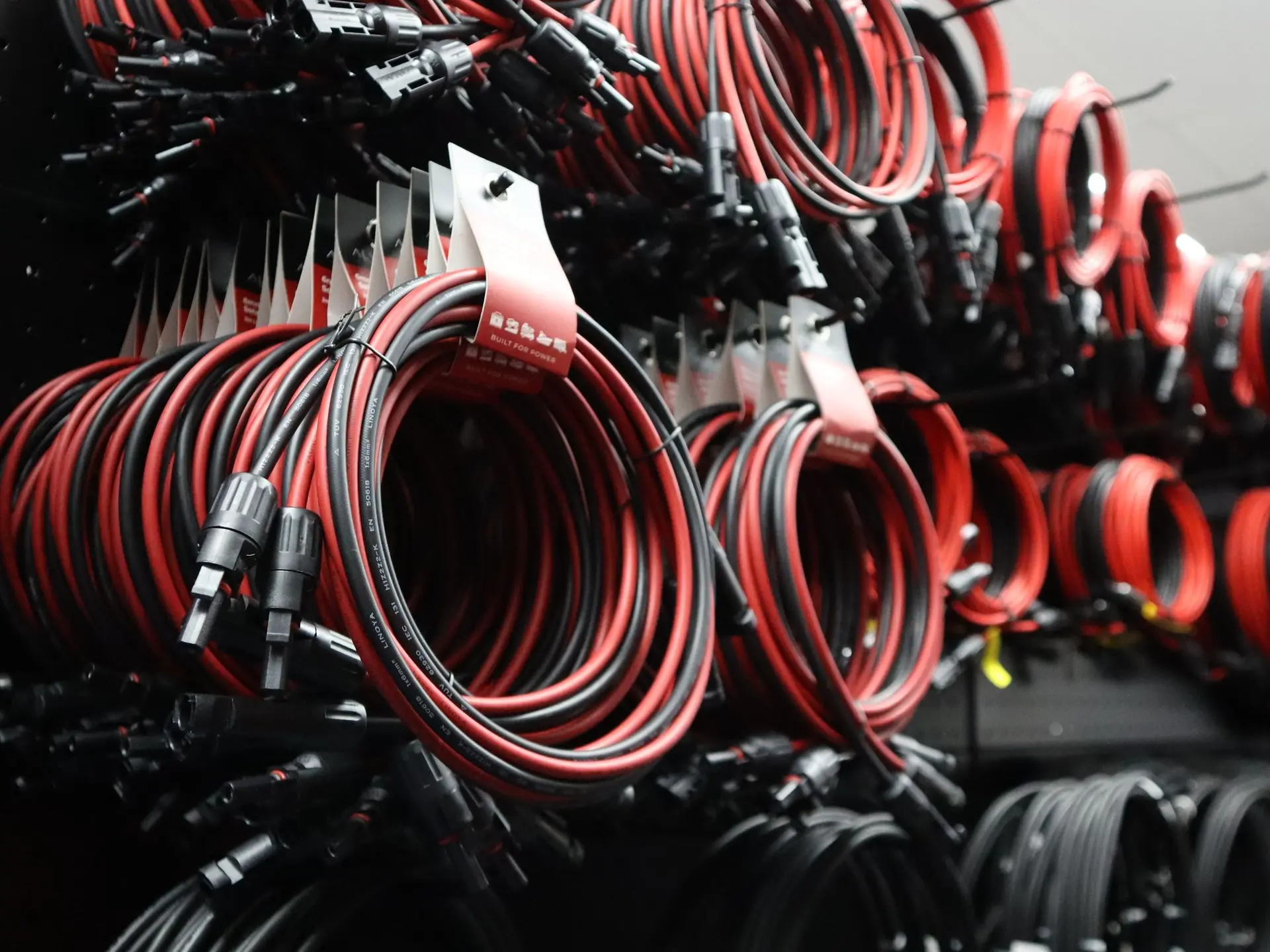
How to fix it:
Shorten your cable runs, use a heavier gauge wire, and minimise your cable joins. The aim is to keep the voltage drop under 3% for 12V systems.
Read More: LV Cable Size Guide
Our latest content
Check out what's new in our company !
Issue #10
The panel or regulator is genuinely faulty
If you’ve checked everything else and still can’t find the problem, a component may be faulty. Unfortunately, panels can degrade or fail over time due to manufacturing defects, weather, or impact damage, and regulators can fail due to age, heat or overload.

To determine which component is faulty, test the open-circuit voltage (Voc) and short-circuit current (Isc) on each panel and compare them to the specifications for the panel. If possible, swap the regulator or panels to make the diagnosis easier.
How to fix it:
The only fix here is to replace the faulty panel or regulator. If it’s a new component, it should be under warranty, and you can get it swapped for a new one. But if it’s become faulty due to age or damage, then you’ll need to replace it with a new one - just make sure it’s going to be right for the rest of your system.










Why Your Solar Panel Isn’t Charging Your 12V Battery